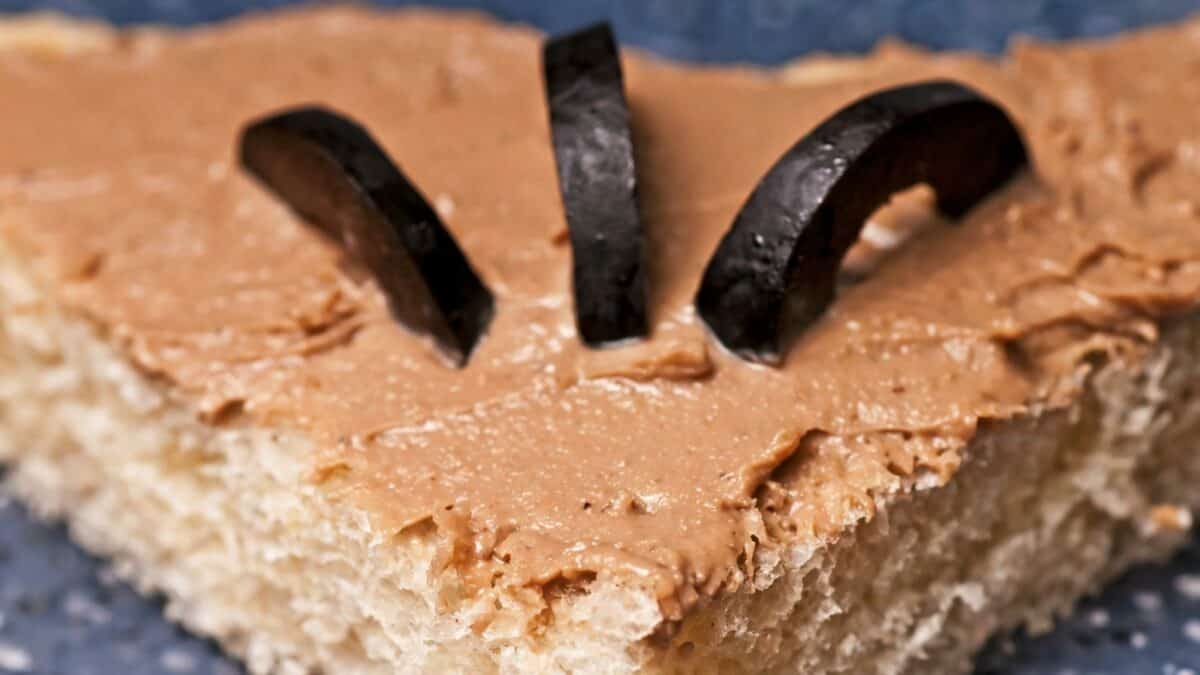Anchovy Paste: What Is It And Where Did It Come From?
Anchovy paste is a mixture of ground anchovies and salt, and sometimes olive oil. It is used as a condiment to add salty umami flavors to dishes like Caesar dressing and bucatini.


Check out our new cookbook
Bitemybun's family recipes with complete meal planner and recipe guide.
Try it out for free with Kindle Unlimited:
Read for freeIn this post we'll cover:
- 1 What does anchovy paste taste like?
- 2 How to cook with anchovy paste
- 3 Best anchovy paste to buy
- 4 Does anchovy paste need to be refrigerated?
- 5 What’s the origin of anchovy paste?
- 6 What’s the difference between anchovy paste and shrimp paste?
- 7 What’s the difference between anchovy paste and canned anchovies?
- 8 Is anchovy paste healthy?
- 9 Conclusion
What does anchovy paste taste like?
If you’ve never had anchovy paste before, you might be wondering what it tastes like. Anchovy paste is made from salted anchovies, and has a very distinctive salty, fishy flavor and just a little added sugar for sweetness.
Can anchovy paste be eaten raw?
Anchovy paste is perfectly safe to eat raw, and in fact, many people enjoy its intense flavor as a condiment on pizza or other dishes. However, if you’re not used to the taste of anchovy paste, it’s probably best to start with just a small amount until you get used to it.
How to cook with anchovy paste
If you’re looking for a way to add a salty, umami-rich flavor to your dishes, anchovy paste is a great option. It can be used as a seasoning in all sorts of recipes, from pasta sauces to soup stocks. Just a little bit of anchovy paste goes a long way, so start with less than you think you need and then add more to taste.
How much anchovy paste should I use?
As a general rule, 1 teaspoon of anchovy paste is a good substitute for 1 teaspoon of minced anchovy fillets. If you’re using anchovy paste as a seasoning, start with less than you think you need and then add more to taste.
Best anchovy paste to buy

It doesn’t get more traditional than this with the Sicilian anchovies, sunflower oil and olive oil.
Amore Anchovy Paste has been used in programs such as Food Network’s Boy Meets Grill with acclaimed chef/restauranteur Bobby Flay.
Cooking with anchovies has never been this easy.
Does anchovy paste need to be refrigerated?
No, anchovy paste does not need to be refrigerated. In fact, it’s best to store it in a cool, dark cupboard where it will keep for up to 18 months. Once you open the jar, however, bacteria may start to grow, so it’s best to use the anchovy paste within 3 months and keep it in the fridge.
What’s the origin of anchovy paste?
Anchovy paste is thought to have originated in the Tuscan Archipelago, where salting and fermenting anchovies had been done for centuries.
They then started to pound the salted anchovies into a lumpy paste. It was in the middle of the 19th century when the paste was further developed into the smooth anchovy paste we know today.
What’s the difference between anchovy paste and shrimp paste?
Anchovy paste is made from salted anchovies, while shrimp paste is made from salted and fermented shrimp. Both have a strong, salty flavor that can be used to season all sorts of dishes.
What’s the difference between anchovy paste and canned anchovies?
Anchovy paste is made from salted anchovies, while canned anchovies are simply salt-cured anchovies that have been packed in oil. Anchovy paste has a much stronger flavor than canned anchovies, so you’ll need to use less of it when cooking.
Is anchovy paste healthy?
Anchovy paste is a good source of protein and omega-3 fatty acids, and it also contains vitamins A and B12. However, it is high in sodium, so it’s best to use it sparingly if you’re on a low-sodium diet.
Conclusion
If you’re looking for a way to add a salty, umami-rich flavor to your dishes, anchovy paste is a great option.
Check out our new cookbook
Bitemybun's family recipes with complete meal planner and recipe guide.
Try it out for free with Kindle Unlimited:
Read for freeJoost Nusselder, the founder of Bite My Bun is a content marketer, dad and loves trying out new food with Japanese food at the heart of his passion, and together with his team he's been creating in-depth blog articles since 2016 to help loyal readers with recipes and cooking tips.

